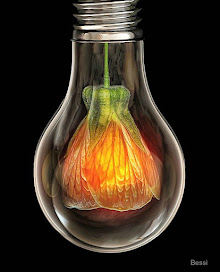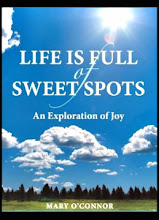 A whiff of perfume can resurrect the past for those who've lived through it, but it can also recreate that time, offering a token of bygone days to others. Many of the poems in Les Fleurs du Mal, a Baudelaire classic, reference the sense of smell. “Le Flacon” (The Perfume Flask) is particularly intriguing as it traverses shadow and light in the author’s imagination while he explores the paradox of life and death through his quill. For a fragrance lover, the spirit of the poem begs the question; what would a perfume inspired by Baudelaire’s “Le Flacon” smell like?
A whiff of perfume can resurrect the past for those who've lived through it, but it can also recreate that time, offering a token of bygone days to others. Many of the poems in Les Fleurs du Mal, a Baudelaire classic, reference the sense of smell. “Le Flacon” (The Perfume Flask) is particularly intriguing as it traverses shadow and light in the author’s imagination while he explores the paradox of life and death through his quill. For a fragrance lover, the spirit of the poem begs the question; what would a perfume inspired by Baudelaire’s “Le Flacon” smell like?Perfumer Yann Vasnier had an answer that came in the shape of a fragrance formula created less than 48 hours after Glass Petal Smoke asked. His olfactive interpretation of “Le Flacon” plays on the imagery in the poem and is expressed in complementary contrasts of freshness and decay. The perfume is not at all fetid, which Vasnier attributes to the use of Patchouli and Cedarwood in the base (the two ingredients have a history of being used in perfumery and as natural insect repellents). Le Flacon Parfum has the animalic nature of Miss Dior, a quality of fruitiness similar to Guerlain's Mitsouko and a unique drydown that faintly echoes the style Vasnier applied to Keiko Mecheri Cherie Gourmandises.
In analyzing the raw materials and proportions used to create Le Flacon Parfum, the reader is permitted entry into the world of fragrance creation from the perfumer’s point of view. To fully experience this effect, begin by reading “Le Flacon” and allowing the words of Baudelaire’s poem to draw pictures in your mind. Once you have a sense for the poem’s meaning you can examine Vasnier’s formula, which includes descriptors for each raw material to help the reader imagine the scent. The act of going through this process is a synesthetic exercise in olfaction; it conjures the act of smelling through literal and imaginative acts of seeing.
The Perfume Flask
by Charles Baudelaire
All matter becomes porous to certain scents; they pass
Through everything; it seems they even go through glass.
When opening some old trunk brought home from the far east,
That scolds, feeling the key turned and the lid released —
Some wardrobe, in a house long uninhabited,
Full of the powdery odors of moments that are dead —
At times, distinct as ever, an old flask will emit
Its perfume; and a soul comes back to live in it.
Dormant as chrysalides, a thousand thoughts that lie
In the thick shadows, pulsing imperceptibly,
Now stir, now struggle forth; now their cramped wings unfold,
Tinted with azure, lustred with rose, sheeted with gold!
Oh, memories, how you rise and soar, and hover there!
The eyes close; dizziness, in the moth-darkened air,
Seizes the drunken soul, and thrusts it toward the verge —
Where mistily all human miasmas float and merge —
Of a primeval gulf; and drops it to the ground,
There, where, like Lazarus rising, his grave-clothes half unwound,
And odorous, a cadaver from its sleep has stirred:
An old and rancid love, charming and long-interred.
Thus, when I shall be lost from sight, thus when all men
Forget me, in the dark and dusty corner then
Of that most sinister cupboard where the living pile
The dead — when, an old flask, cracked, sticky, abject, vile,
I lie at length — still, still, sweet pestilence of my heart,
As to what power thou hast, how virulent thou art,
I shall bear witness; safe shall thy dear poison be!
Thou vitriol of the gods I thou death and life of me!
— Edna St. Vincent Millay, Flowers of Evil (NY: Harper and Brothers, 1936)
Le Flacon Parfum by Yann Vasnier
Top Notes:
Methyl Linoleate (linseed oil) 5
Galbanum Oil (old classic, green, oily) 0.2
Melonal (rancid flower, macerated petals, melon) 0.1
Aldehyde C6 (rancid, green, apple, sharp) 0.5 @10%
Ambrette Seed (burpy orris, oily, fatty) 0.5 @10%
Nutmeg Oil (dusty, spicy, dry) 1.9
Blackcurrant Bud Absolute (feline urine, sulfurous fruity) 0.5 at 10%
Middle Notes:
Rose de Mai Absolute (classic French rose) 5.5
Rhodinol (dusty rose, verbena) 5
Pêche Pure (dusty, fruity, peach kernel, plum) 1
Jasmin de Grasse (classic French jasmine) 5.5
Orris Butter (powdery, waxy, oily, fatty) 1.1
Cedarwood Virginia (dusty, wood shavings) 10.0
Indonesian Patchouli (woody, dusty, camphorous) 8.0
Isobutylquinoleine (dry, woody, leathery) 0.1
Base Notes:
Oakmoss (old, woody, chypre) 2.0
Civet (classic, animalic, fecal) 0.5
Ambergris Infusion (classic, dry, honey, tobacco, hay, animalic) 1.0
Vanilla Infusion (powdery, vanilla, chocolate, caramel) 40.0
Musk Tonkin Infusion (fur, dried blood, dusty dirty cotton) 1.0
Musk Ketone (powdery, soapy) 10.0
Beeswax Absolute (honey, dried fruit, moss, tobacco) 0.6
Article Notes:
Yann Vasnier is a perfumer at Givaudan. In 2007 he was interviewed by the editor regarding his favorite pastry, kouign amann. When asked to describe “Le Flacon” as a pastry, Vasnier said, “It would be a rose and raspberry macaroon I brought back from Paris and kept so well hidden that I found it years later when I moved out of my apartment.” With his cookie escapade behind him, Vasnier has resumed his favorite pastime; reading biography and history books. Leonie Frida’s Catherine de Medici: Renaissance Queen of France is one of his favorites.
One cannot read Charles Baudelaire’s Les Fleurs du Mal (The Flowers of Evil) without encountering the sense of smell in its pages. Rife with romanticism, sensuality and debauchery the work is, in Baudelaire’s words “clad in a cold and sinister beauty”. Les Fleurs du Mal can be read in its entirety on https://fleursdumal.org/. The poems are available in the original French and a variety of English translations.
To research the natural materials use in Le Flacon Parfum, visit Bo Jensen’s Guide to Nature’s Fragrances . To research the aroma molecules use Givaudan’s Fragrance List.
 On April 24, 2009, this story received a FiFi Award Nomination from the Fragrance Foundation and took third place in the "Editorial Excellence in Fragrance Coverage" category. The award is historical as 2009 was the first year that blogs were included in the "Editorial Excellence"category.
On April 24, 2009, this story received a FiFi Award Nomination from the Fragrance Foundation and took third place in the "Editorial Excellence in Fragrance Coverage" category. The award is historical as 2009 was the first year that blogs were included in the "Editorial Excellence"category.




